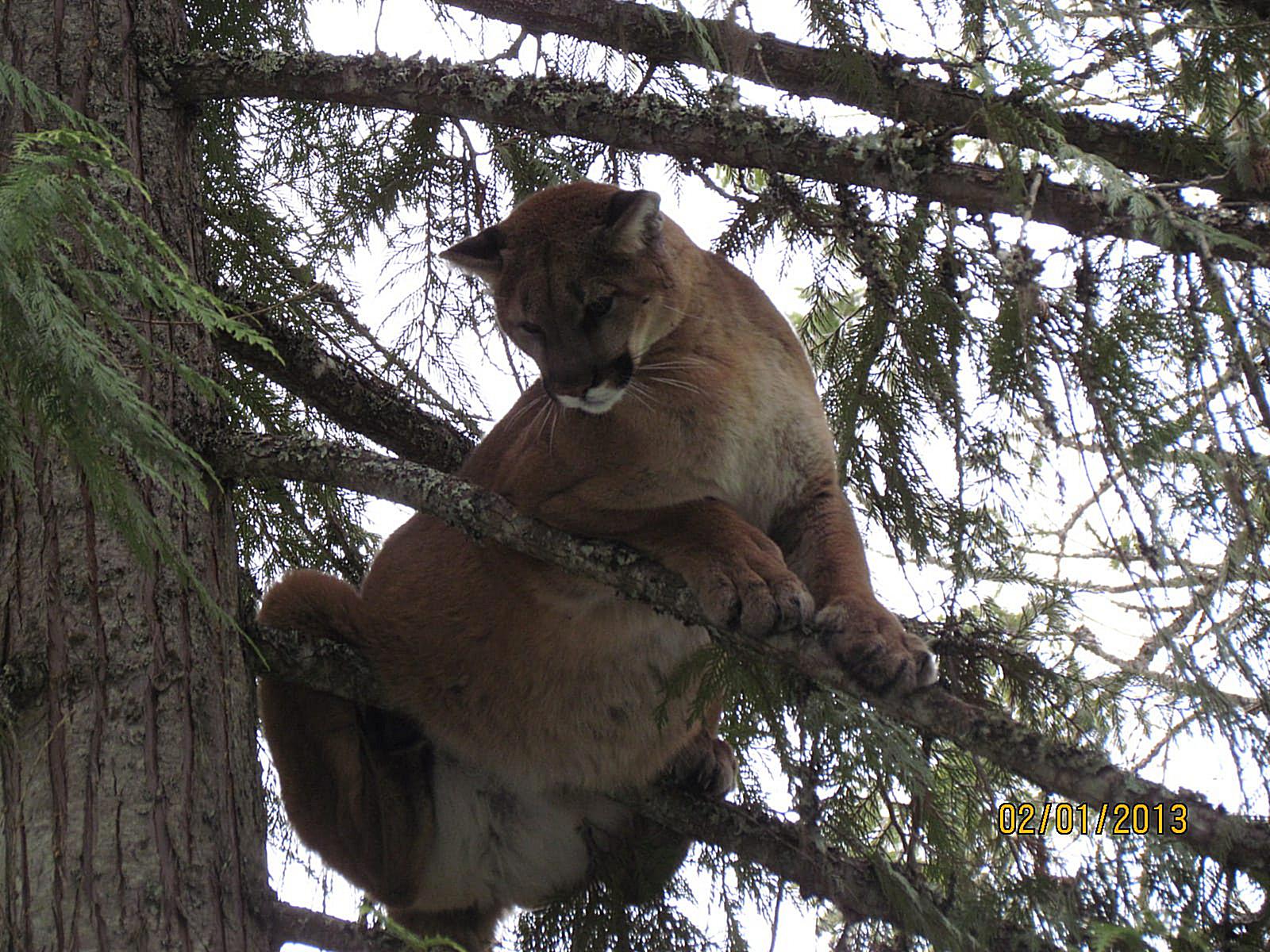The Kalispel Tribe’s Reservation is located in prime deer and elk winter range and supports healthy big game populations. Those “big game” animals, primarily deer, elk and moose are beneficial to hunters and provide for four legged predators. Cougar depredations and human encounters have been increasing over the last few years, which has led to our research regarding cougar behavior modification. The goal of this project is to better understand how cougars respond to human/dog interactions and if they can “learn” to avoid people and pets.
Our project involves capturing cougars and fitting them with a GPS collar. This will reveal the cats location to researchers in the field. Standard GPS survey collars typically provide data every few hours, and are tracked from our computers in the office. For this project we need to know exactly where the cougar is located and receive data by the second while in the field. To gather this information we worked with engineers at Garmin to develop a tracking collar that could be remotely controlled into “sleep mode” when we are not closely monitoring the big cats, as well as a “wake mode” when we are in the field and need to work with the cougars. This control feature is critical to extend battery life of the GPS units, which would quickly run low if required to send data every 2 seconds for very long.
We are cooperating with the Washington Department of Fish and Wildlife’s law enforcement division and responding to calls of cats that have been sighted, but not yet caused depredations. For this study, we want cougars that live near homes and farms and have some familiarity with the exurban/rural landscape that we share. Cougars are captured with hounds, then weighed, measured, ear tagged and fitted with our GPS collar before being released. Once the cougar is collared we closely monitor their movements and locations for approximately 6 weeks. During this time we will “haze” the cat 5 times to gather our data. During a “hazing event” the cougar is located with the GPS data, typically during mid day when they are bedded or less active. The use of a small speaker broadcasting a podcast of human voices at 80 decibels, which is about as loud as someone’s “outside voice”. We look for the best and most direct approach to the cat while monitoring the cougar’s location and movements.
The important measurements include:
- How close does the cougar allow us to approach?
- How far does the cougar run once it has mobilized?
When the cougar mobilizes and moves away from us we closely monitor the movements and once the cat stops we release the trained dogs to trail the cat and tree it. This “hazing” event is repeated weekly for 4-5 weeks and the data will demonstrate whether the cougar learns to associate the hazing with the sound of human voices. Early data shows that they are mobilizing more quickly after hearing the voices and moving further away from the voices, but more data is needed to confirm these early findings.
 close
close
